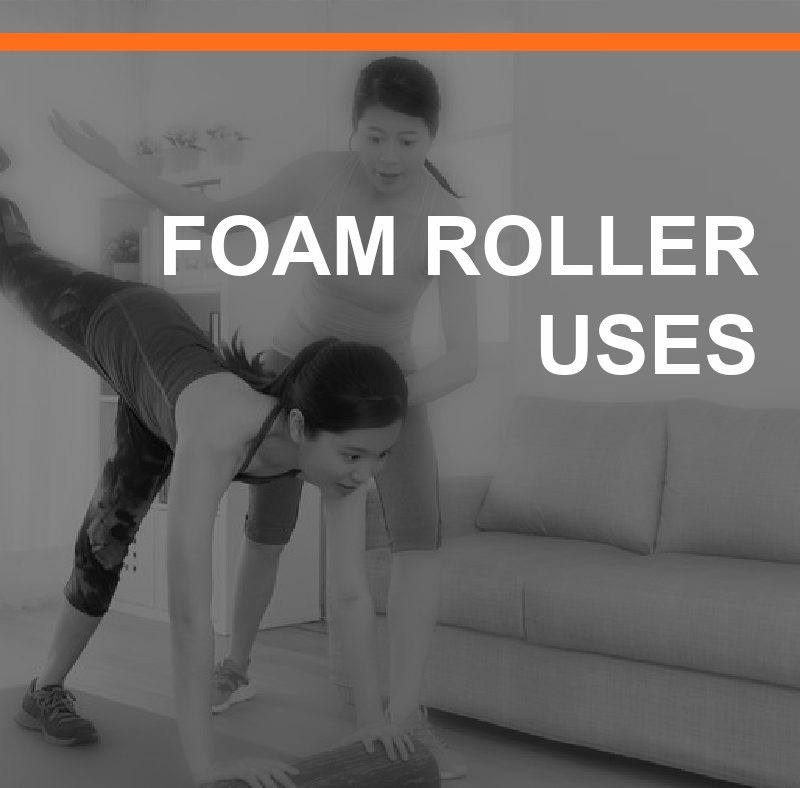
Most of us view foam rollers as tools for SMR and recovery. But applications of the foam roller do not stop there.
Foam Rollers Have Many Uses
Foam rolling and Self Myofascial Release (SMFR or SMR) have become a staple practice for athletes, trainers, coaches, and Physical Therapists. The original techniques were invented by Moshe Feldenkrais, the founder of Feldenkrais Method, in the 1980s. Feldenkrais originally repurposed foam rolls that were meant for industrial purposes to help his clients improve balance and functional movement.
Fast forward to 2021, we use foam rollers made of polyethylene foam, EVA, or PVC among other things. They come in various densities, textures, and shapes. But rolling and massage are not the only ways to use foam rollers. Aside from warm-up and cool-down releases, any trainer can incorporate the use of foam rollers into exercises and programming. Here are just a few ideas to get your creative juices flowing.
Stabilizing Push-Ups On Foam Roller
Whether for just a challenge, or to help improve grip strength and shoulder stability, doing a push up with your hands on the foam roller is a great exercise. Ideally, your hands should be in the “thumb under” position, meaning four fingers on one side and thumb on the other. Grip should be active, like during a yoga down dog, and wide or narrow depending on training preference.
Super Light Weight
There are plenty of opportunities to use a foam roller as ‘weight’, especially in a movement that might require mastery of form rather than increase in resistance. A favorite is the reverse lunge with twist. Hold the foam roller on either end. The classic 3-foot roller can help force the ‘proper’ rotation in the waist as well. Hold the foam roller, with arms extended, in front of body. Step back in to a reverse lunge with the right leg, and twist, from the waist, over the left knee. Repeat or alternate.
Along the Spine
The Foam Roller can provide a great way to warm up before a workout, and decompress the spine. Sit on the front end of the 3 foot foam roller and lay down, with your spine along the roller, and your head supported. The following 3 moves are a great combo, try them 10 times each:
- Do “snow angels”. Bring your hands from near your hips, parallel to the floor, all the way until your biceps are near your ears.
- Do hip extension or hip bridges. Articulate your spine as you roll up and down, like a string of pearls being slowly lifted off a table.
- Regular crunches will warm up the abs and massage the back.
Assisted Single-Leg Dead Lift
Do you or your client need a little help balancing and maintaining form during a single leg dead lift… but only a little help? Use the foam roller as a stabilizing tool. Place your right hand on top of the roller, extend your right leg back, press slightly down as you hinge at the hip. If you put too much weight on the foam roller it will just fall over, but it provides just enough stability for the exerciser not to topple.
Don’t hesitate to think outside of the box when it comes to the fitness tools you have available. Creating variety for your clients is a valuable tool too, so leverage all the possibilities, starting with the foam roller.






